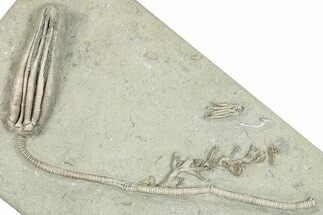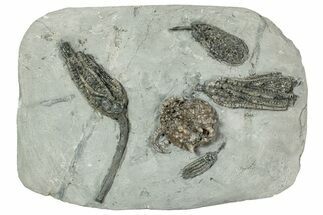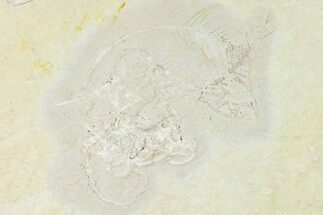This Specimen has been sold.
Double Scytalocrinus Crinoid Fossil - Crawfordsville
This is a beautiful pair of crinoids representing two different species of the Scytalocrinus genus. The larger crinoid (2 inches long) is Scytalocrinus decadactylus (1.1 inches long) and the smaller one is Scytalocrinus hamiltonensis. The detail on both specimens is amazing. This specimen has been microscopically prepared using air abrasives and ID'd by one of the best preparators out there who has done a ton of work on the Crawfordsville crinoids.
Crinoids are commonly known as sea lilies, though they are animals, not plants. They are echinoderms related to starfish, sea urchins, and brittle stars. They attached themselves to the sea floor and had feathery, tentacle-like appendages which they used to capture particles of food. First appearing in the Ordovician period, 488 million years ago, they still survive to this day in deep water.
Crinoids are commonly known as sea lilies, though they are animals, not plants. They are echinoderms related to starfish, sea urchins, and brittle stars. They attached themselves to the sea floor and had feathery, tentacle-like appendages which they used to capture particles of food. First appearing in the Ordovician period, 488 million years ago, they still survive to this day in deep water.
SPECIES
Scytalocrinus decadactylus & Scytalocrinus hamiltonensis
LOCATION
Montgomery County, Indiana
FORMATION
Ramp Creek Limestone
SIZE
Larger crinoid 2" long
CATEGORY
SUB CATEGORY
ITEM
#8399
We guarantee the authenticity of all of our specimens.
 Reviews
Reviews













